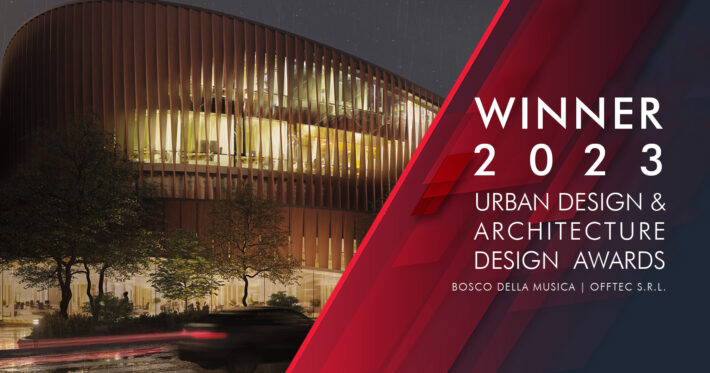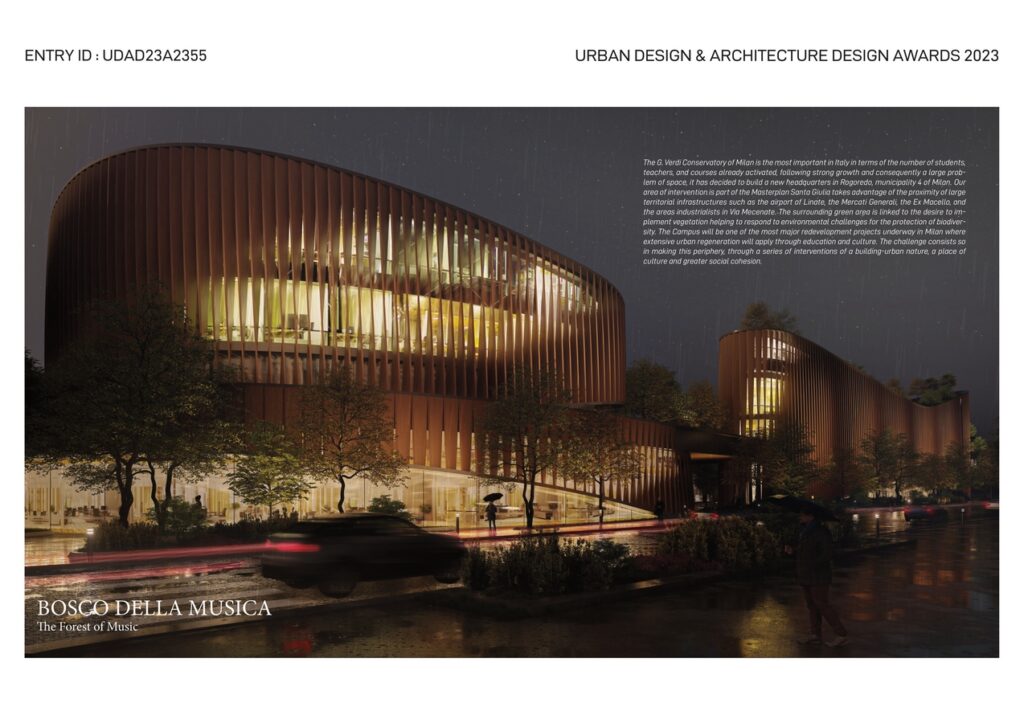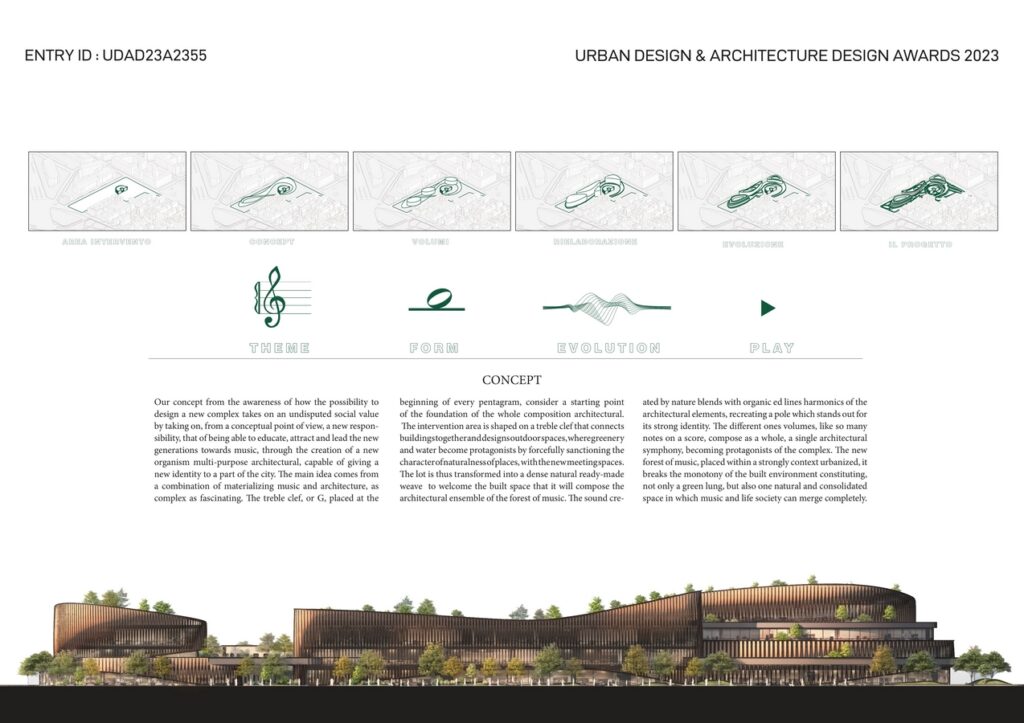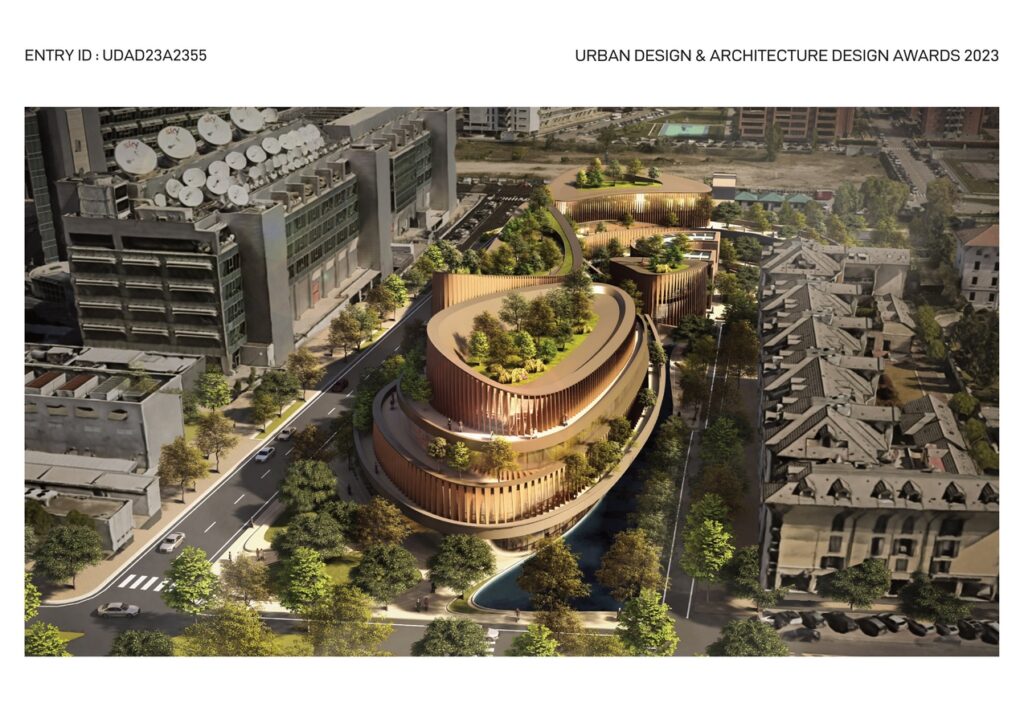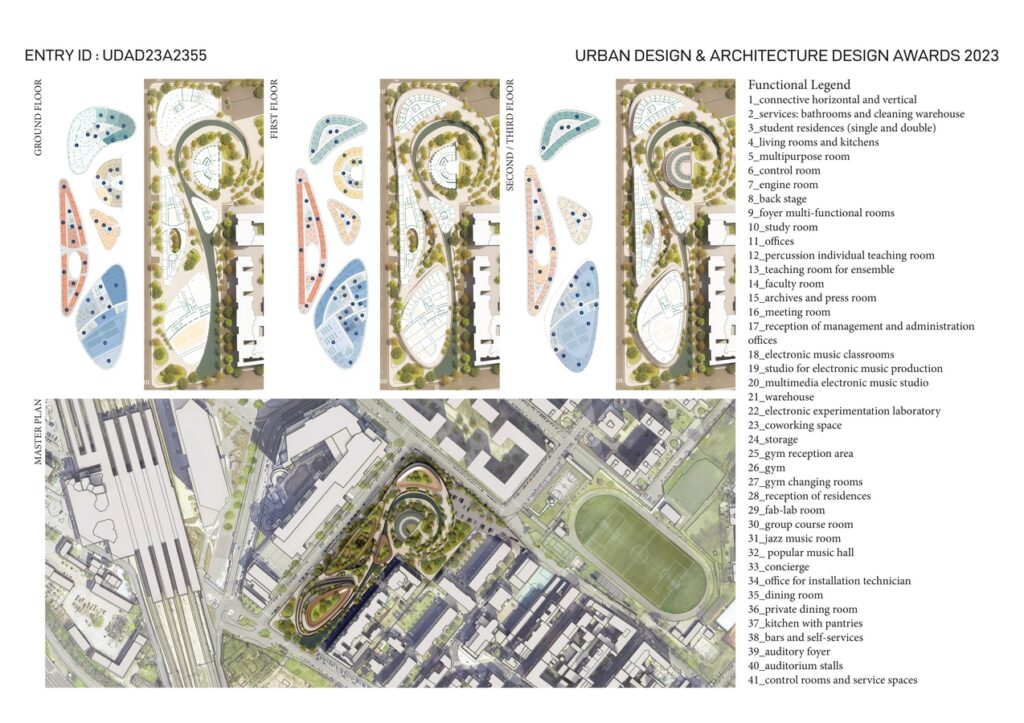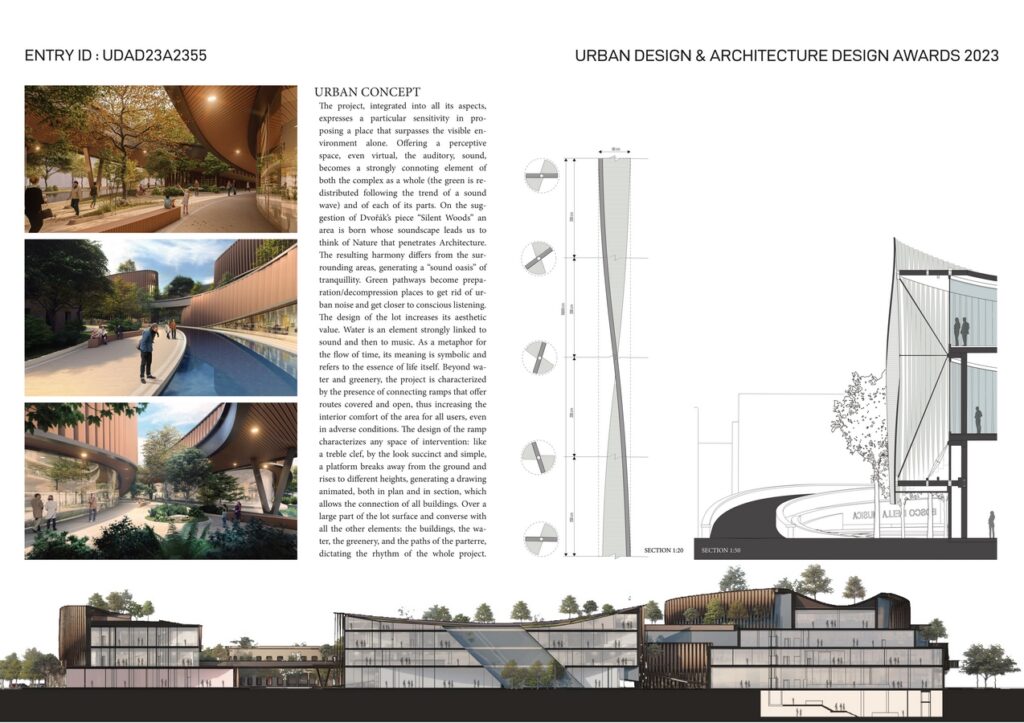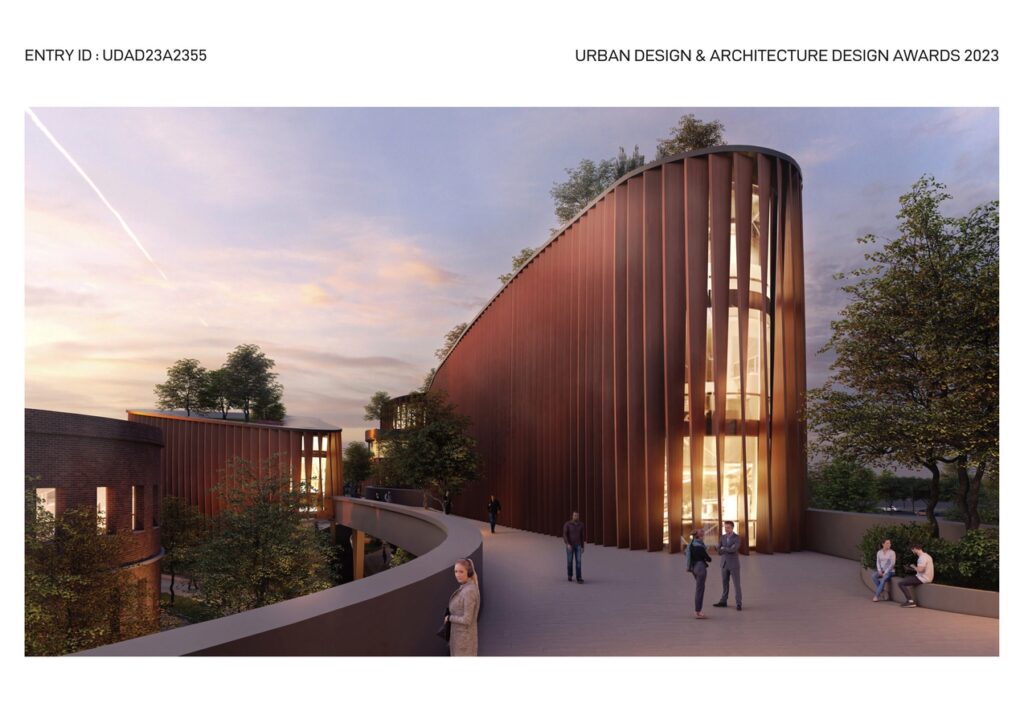The G. Verdi Conservatory of Milan is the most important in Italy in terms of the number of students, teachers, and courses already activated, following strong growth and consequently a large problem of space, it has decided to build a new headquarters in Rogoredo, municipality 4 of Milan. Our area of intervention is part of the Masterplan Santa Giulia takes advantage of the proximity of large territorial infrastructures such as the airport of Linate, the Mercati Generali, the Ex Macello, and the areas industrialists in Via Mecenate. The surrounding green area is linked to the desire to implement vegetation helping to respond to environmental challenges for the protection of biodiversity. The Campus will be one of the most major redevelopment projects underway in Milan where extensive urban regeneration will apply through education and culture. The challenge consists so in making this periphery, through a series of interventions of a building-urban nature, a place of culture and greater social cohesion.
Urban Design & Architecture Design Awards 2024: Entries Open!
Take your work to the next level. Register Now…
Gold 🏆 Winner
Urban Design & Architecture Design Awards 2023
BOSCO DELLA MUSICA
Educational Architecture (Concept)
Firm
OFFTEC S.R.L.
Architect/Designer
FLAVIAN BASILE
Design Team
OFFTEC S.R.L.
Location
MILAN
Country
Italy
Photographer/Copyright
©OFFTEC S.R.L.
Our concept from the awareness of how the possibility to design a new complex takes on an undisputed social value by taking on, from a conceptual point of view, a new responsibility, that of being able to educate, attract and lead the new generations towards music, through the creation of a new organism multi-purpose architectural, capable of giving a new identity to a part of the city. The main idea comes from a combination of materializing music and architecture, as complex as fascinating. The treble clef, or G, placed at the beginning of every pentagram, consider a starting point of the foundation of the whole composition architectural.
The intervention area is shaped on a treble clef that connects buildings together and designs outdoor spaces, where greenery and water become protagonists by forcefully sanctioning the character of naturalness of places, with the new meeting spaces.
The lot is thus transformed into a dense natural ready-made weave to welcome the built space that it will compose the architectural ensemble of the forest of music. The sound created by nature blends with organic ed lines harmonics of the architectural elements, recreating a pole which stands out for its strong identity. The different ones volumes, like so many notes on a score, compose as a whole, a single architectural symphony, becoming protagonists of the complex. The new forest of music, placed within a strongly context urbanized, it breaks the monotony of the built environment constituting, not only a green lung, but also one natural and consolidated space in which music and life society can merge completely.
The project, integrated into all its aspects, expresses a particular sensitivity in proposing a place that surpasses the visible environment alone. Offering a perceptive space, even virtual, the auditory, sound, becomes a strongly connoting element of both the complex as a whole (the green is redistributed following the trend of a sound wave) and of each of its parts. On the suggestion of Dvorak’s piece “Silent Woods” an area is born whose soundscape leads us to think of Nature that penetrates Architecture. The resulting harmony differs from the surrounding areas, generating a “sound oasis” of tranquillity. Green pathways become preparation/decompression places to get rid of urban noise and get closer to conscious listening.


